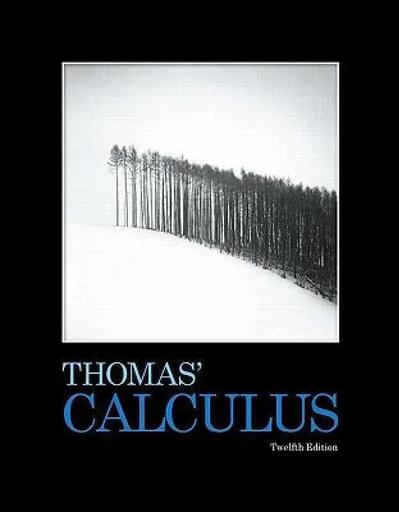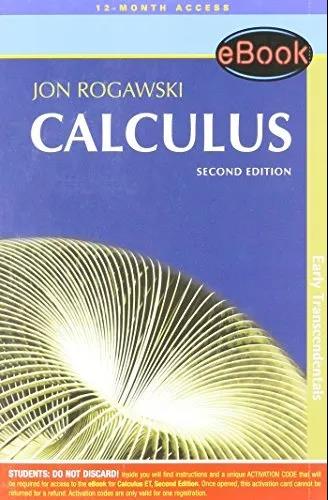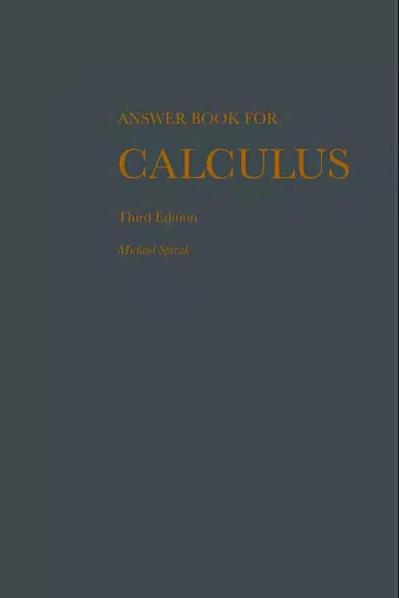目录
5 60 本教材点评
5.1 微积分 4 本

《Calculus》
作者:SPIVAK
出版商:Publish or Perish
出版年:2008
ISBN:9780914098911
适用范围:本科生
推荐强度:10
作者简介:Michael David Spivak是一位专门研究微分几何的美国数学家, Spivak是五卷本《微分几何综合概论》的作者。 Spivak于1964年在约翰·米尔诺(John Milnor)的指导下从普林斯顿大学博士学位。1985年,他获得Leroy P. Steele奖。Spivak在基础物理学方面作过演讲。
书评:
This is the best Calculus textbook ever written.
Got that? If any of you want to champion some other book, you're itching for a fight.
Perhaps you'd like me to expand on that. Let me begin with some autobiography. I first studied calculus during my first year at the University of São Paulo, in Brazil. At that time, we didn't use a textbook; instead, we used references, and we used notes. The notes, prepared by one of the teachers, were small booklets (probably mimeographed — remember that?). The references were a variety of books that our professors felt could be consulted with profit. Among them was Spivak's Calculus. I didn't buy a copy, because I was fairly happy with the notes and with the books I already had. But the name stuck in my head.
A couple of months into the course, I was trolling the aisles of my favorite bookstore, and saw there a copy of the book. I think it was the first edition. It was definitely in soft covers, perhaps an edition for sale in third world markets. I remembered the name, bought the book, took it home, and set to reading it.
It was love at first sight. OK, I'll admit that I wasn't doing all — or even most — of the problems. (There are lots of very hard problems; instructors will be glad that there is an answer book.) But Spivak's account of what Calculus is all about, his careful but precise account of the theoretical underpinnings of the material, his chapter on the hard theorems (the ones that require an understanding of the completeness of the reals), his pictures, even his asides... this was calculus as an intellectual adventure, deep, compelling, and beautiful. I read the whole book, making my way far beyond what we had covered in class by that point. I even read, with some small level of understanding, the sections on complex analysis and the explanation of Dedekind cuts.
It will give you a measure of Spivak's impact on me to note that I took quite seriously the annotated suggested reading list given in the back, sought out many of those books, and even managed to read some of them.
I never forgot some bits of the book. Spivak's comment that mathematicians like to pretend that they can't even add, but most of them can when they have to (on page 179) stuck in my mind. I've used it in class many times. His chapter on integration in finite terms is another I remembered, and especially problem 7 in that chapter (described as Potpourri. No holds barred.). The treatment of power series also stuck to me, with the result that I've been a fan of series ever since.
This third edition is better than the one I read. Spivak has added, in particular, a careful account of how one can deduce Kepler's laws of planetary motion from Newton's laws of physics. This was, of course, one of the first applications of the calculus, and it is still one of the most impressive ones. Its inclusion is a definite improvement. Beyond that, there are very few changes, mostly corrections of small mistakes. The suggested reading list has not, alas, been updated, with the result that it now has a slightly antiquarian flavor: some of the books are out of print, and some, like tables of integrals, are best replaced by appropriate software tools.
But the core of the text is still the same. If you want a calculus textbook that does everything honestly but gently enough so that good first-year students can follow it, this is the one.
There is no multivariable calculus, which is a pity; I'd have loved to see what Spivak could do with that at this level. (His Calculus on Manifolds is, of course, a classic, but it is so terse as to be impenetrable for most students.)
I have used this text for the Honors Calculus course at Colby. Students find it very hard, as one might expect. But they also understand that they are getting the real thing, that they are being treated as intellectual adults. When I get to teach that course again, I'm sure I'll use it again. And maybe, if I'm lucky, a student or two will fall in love.
这是有史以来最好的微积分教科书!不接受反驳。
我在巴西圣保罗大学学习的第一年就开始接触微积分,那时候我们还没有使用成套的教科书,老师用自己油印的讲义给我们上课,上面写着一些参考用书,其中就有Spivak的这本微积分。所以开学没几个月,我就去学校附近的书店去购买了这一本书,当时还是初版。书是软皮封面,摸起来非常有质感,我马上就带回家开始阅读。
我对这本书可谓是一见钟情,虽然第一次阅读时候我没有搞懂书上的很多内容,但是我深切体会到了其中蕴含的美感。Spivak对于微积分的定义是非常严谨的,基础材料也非常详实,阅读它远远超过了我在课堂上所学到的。我到现在还记得书上的一些内容,比如Spivak说:“数学家很喜欢假装他们遇到瓶颈,但是在必要时,大多数学家可以跨过那一步。”,这句话我铭记于心。从那以后,我就成为了Spivak先生的粉丝。
那么我们今天要介绍这个版本比我大学时读的要更好,Spivak特别补充了一块内容,那就是从牛顿的物理学定律中推论开普勒的行星运动定律,这也正是微积分最早的应用之一。这个版本主要是对一些错误进行了更正,总体改变并不多,其中它的阅读清单在今天看其实稍显老旧了,有些书都已经绝版了,部分内容读者可以参考网络或者最新的数学软件。
但这本书的核心是带领人们走进微积分大门。学习微积分,最重要的是一份温和的、循循善诱的教材,它要忠实于微积分原本面目,同时又要能让大一的学生就足够学习它。
现在我自己也是一名数学教授了,Spivak的微积分也成为了我数学荣誉课程上的参考教科书。同学们一开始都会觉得这本书有些困难,但是他们也知道这才是在学真正的知识,希望我也能带领那么一两个学生爱上这本书。
点评人:Fernando Q. Gouvêa(科尔比学院数学教授,获巴西圣保罗大学学士学位)
资料整理和翻译:孙华铱 冯远航

《Thomas’ calculus》
出版商:Pearson
出版年:2009
ISBN:9780321587992
适用范围:本科生,研究生
推荐强度:9
作者简介:George B. Thomas, Jr.,麻省理工学院教授,在美国数学协会理事和美国工程教育学会数学分会执行委员会中均占有一席之地。 他的书《微积分和解析几何》于1951年首次出版,此后经历了多次修订。他还与人合著了有关数学的专著,包括《概率与统计》一书。
书评:
The cover image of a tree line on a snow-swept landscape, by the photographer Michael Kenna, was taken in Hokkaido, Japan. The artist was not thinking of calculus when he composed the image, but rather, of a visual haiku consisting of a few elements that would spark a viewer’s imagination. Similarly, the minimal design of this text allows the central ideas of calculus developed in this book to unfold to ignite the learner’s imagination.
Originally written in 1951 and revised, expanded, and modernized over the years, Thomas’s iconic Calculus and Analytic Geometry offered several generations of students a fascinating way to learn this wonderful subject. This edition is presented as “based on the original work by George B. Thomas, Jr. as revised by Maurice D. Weir and Joel Haas.” Comparing it to my thoroughly used copy was interesting.
As a student I heard talk of the alleged beauty of mathematics, but at the time I was too busy to notice, bogged down as I was with the demands of heavy class loads and the drudgery of part time jobs. Then I came across Thomas′s splendid passage on Newton’s famous solution to the brachistochrone problem and the related tautochrone problem. The treatment was so elegant that I experienced the great epiphany of suddenly seeing that Bertrand Russell’s words were true that “[m]athematics, rightly viewed, possess not only truth, but supreme beauty — a beauty cold and austere, like that of sculpture.” In this superb new edition, the problem is presented much like in the 1951 edition, but the exposition is charmingly enhanced with additional material on the cycloid curve and color is added for superior clarity. The cycloid was also used by Christian Huygens in his pendulum clock, and is well explained in words and with nice illustrations. Like these examples, the rest of the book delights with its worked-out problems and figures.
In bringing Thomas to the 21st century, the new authors have included a variety of helpful material such as printed material and internet references; in addition, some of the exercises require software programs like Maple or Mathematica.
Further examples of the appearance of calculus in other areas are the remarkably accurate sine curve describing the weather over the course of the year in Fairbanks, Alaska, why the trachea constricts when an individual is coughing, the calculation of the optimum angle for kicking a field goal in football, why machines often break down when run at excessive speed, and even art forgery. Sociologists will enjoy the treatment of social diffusion. These are all real-life examples which serve to show the vast usefulness of our beloved subject. Calculus is fun stuff and learning it is all the more enjoyable with this book.
这本书的封面是摄影师迈克尔·肯纳拍摄的日本北海道的雪地林道,这位艺术家的构图和微积分并无关联,但是考虑了多种元素结合在一起的效果,可以更好地使学生的灵感迸发。本书的教材文本也是如此,从枝干着手扩大到微积分的大树,以激发学习者的想象力。
托马斯的代表作《微积分与解析几何》最早写于1951年,这是最为原始的版本,经过多年的不断修订,成为了引导学生学习微积分的经典有趣教材。今天我点评的这本书,是以托马斯的《微积分与解析几何》为原本,经过Maurice D. Weir和Joel Haas修订的版本。
在我的学生时代,我就听说所谓的“数学之美”,但由于但是我课业过于沉重,加上我还兼职补贴生活,所以当时我并没有注意到。后来有一次,我听了托马斯先生一次关于牛顿问题的演讲,讲得十分优雅,给了我一次关于数学之美的顿悟。我突然领会到了罗素的一句话:“数学不仅是真理,还具有至高无上的美感——一种冷酷而朴素的美感,就和古代雕塑一样”。那么在这个非常好的教材版本中,和托马斯之前著作表达的问题是差不多一致的,但是在细节上做了诸多修补和改良,使得它焕然一新,并充满了美感。
这本教材更好地把托马斯的思想带入了21世纪,加入了各种实用的元素,比如有全新的印刷技术,丰富了阅读体验;有互联网参考资料的接入,使得内容拓展更全面;有Maple或Mathematica软件为基础的练习,帮助读者熟悉这些数学工具。
本书所采用的案例也是非常有趣,比如阿拉斯加一年四季的天气变化、当一个人咳嗽时的气管收缩、踢足球射门时的最佳角度,为什么超速行驶时机动车经常损坏等等。这些例子都是生活中常见的场景,足以可见学习微积分的巨大实用性。
微积分是很有趣的东西,也希望大家多多学习这本书。
点评人:Dennis W. Gordon(曾在韦恩州立大学和堪萨斯大学学习化学,并且在学术和工业研究领域拥有专业的职业,个人兴趣是数学)
资料整理和翻译:孙华铱 冯远航

《Calculus: Early Transcendentals》
作者:Jon Rogawski
出版商:Freeman, W. H. & Company
出版年:2012
ISBN:9781429260091
适用范围:本科生
推荐强度:8
作者简介:Jon Rogawski在耶鲁大学获得了大学学士学位(并同时获得了数学硕士学位)。他在普林斯顿大学罗伯特·兰兰兹(Robert Langlands)的指导下攻读数学博士学位。在加入加州大学洛杉矶分校数学系之前,他曾在耶鲁大学和芝加哥大学任教,并在高级研究所和波恩大学担任过研究职务。Jon感兴趣的领域是数论和对半简单群的调和分析。他在领先的数学期刊上发表了许多研究文章。他是斯隆奖学金的获得者和《太平洋数学杂志》的编辑。
书评:
The most successful calculus book of its generation, Jon Rogawski's Calculus offers an ideal balance of formal precision and dedicated conceptual focus, helping students build strong computational skills while continually reinforcing the relevance of calculus to their future studies and their lives.
This is the early transcendentals version of a text that was reviewed here earlier. Most of what was said in that review applies to this book also. The main difference is that the logarithm and exponential functions are introduced much earlier in this version of the text.
The approach taken in this book is less radical than that. The authors define ax for rational x in the usual way (without bothering to prove the existence of n-th roots, of course), then extend the definition to irrational exponents using a limit argument (with at least some proofs). They then define the logarithm as the inverse function, and finally use the limit of (1+r/n)n to introduce the natural exponential function. (At this point of the text, not a word is said to justify that adjective!) The derivative of the logarithm function is obtained first, then the inverse function theorem is used to find the derivative of the exponential function.
This approach does have the advantage of introducing a serious example of the use of limits into what is usually a dreary chapter. (Until we meet the derivative, why do we care what the limit is?) I believe it is an improvement on the late transcendentals approach. But in the end I still have my doubts whether students are ready for this kind of analysis so early in the course.
For what it's worth, I would simply take for granted the existence of the logarithm and exponential functions and their basic properties. Then, using the definition of the derivative, it's fairly easy to prove that the derivative of ax is some constant times ax. Choosing the right value for a makes that constant equal to 1, which explains what is natural about ex . An analogous argument explains why we must use radian measure if we want the derivative of sin(x) to be cos(x) rather than a constant times cos(x). This seems both simpler and more illuminating, even if it hides the inherent trickiness of defining these functions. There's time for that in the analysis course.
这是我们这一代人最为成功的数学教科书,它在形式精度和专注概念之间取得了理想的平衡,可帮助学生建立强大的计算技能,同时不断增强微积分与未来学习和生活的相关性。而这本“超越前期”的版本,对指数函数和对数函数的介绍比其他版本要早得多。
本书所采用的讲解方法不是那么激进。比如对于实数的定义,作者是先从有理数开始定义,然后通过极限参数和其他的一些证明将其扩大到无理数。比如对于指数函数,作者将其定义为对数函数的反函数,求导时也是先求指数函数的导数,再推到对数函数的导数。
这种方法我觉得其确实是具有试验性的,可以使得某部分内容不会显得那么沉闷或曰刻板,但是我有点担心学生未必准备好这种新颖的分析方式,因为这也需要洞察力去把握其中的数学精髓。采用这样的方式看起来可以更简单,实际学习中也会更具有启发性,不过需要在教学中不断实践这种方法。
资料整理和翻译:孙华铱 冯远航

《Answer Book for Calculus》
作者:Michael Spivak
出版商:Publish or Perish
出版年:1996
ISBN:9780914098904
适用范围:本科生
推荐强度:9
作者简介:Michael David Spivak是一位专门研究微分几何的美国数学家, Spivak是五卷本《微分几何综合概论》的作者。 Spivak于1964年在约翰·米尔诺(John Milnor)的指导下从普林斯顿大学博士学位。1985年,他获得Leroy P. Steele奖。Spivak在基础物理学方面作过演讲。
书评:
Spivak's classic Calculus book has many exercises - most of which are very difficult. You need to understand most of the problems (if not all) in the book in order to really understand calculus. This book includes not only detailed answers to the problems but tips on how one should approach them.
Primarily a hint book as another reviewer said, which I find is the best for keeping your brain in shape - the hard part about proofs isn't writing them, it's discovering them - if you had perfect answers, you'd never exercise your mind, which is a must for any class using Spivak's books. In some classes, seeing the answers will help you with the course, because you see the procedure, and copy it on similar problems. You can't do that with 'real' calculus, it's too in depth, hence the book provides less details, so that you perfect what is really important, the art of finding the proof yourself.You can find in this book solutions to all the problems (as far as I have checked) in the Calculus book, but some solutions are too terse and elegant to be of use to beginning students. Sometimes it is necessary to be more explicit so that students are reminded of theorems and not to take for granted that they have been mastered.
This book is a really great study aid to be used with Spivak's Calculus. Especially for students with professors that give a lot of theory and not a lot of examples. The answer book does not give all the answers outright, but gives many very good hints otherwise that can really shorten your search time.
Spivak的经典微积分教材中,许多问题是很难的,但是又必须了解其中大部分,你才能完整把握它的精髓。那么这本解答读本,不仅包含对这些问题的详细解答,还提供如何解决类似问题的技巧。
不过这始终是一本提示书,记住这一点,也就知道了使用它的方法。微积分当中的难点并不是写出一道题的答案,而是对一些概念和核心问题的证明。往往会出现这样的状况,当你有了完美的答案,你就不会去动脑子想了。所以对使用这本Spivak亲自编写的微积分指导书的读者们,在某些课程当中,这本书对你的帮助是很大的,但是更多的内容还是需要自己去探索和完善。
本书当中解决一些问题的方法非常简洁和优雅,并不是初学者可以理解和使用的。当你熟悉了定理和基础方法后,再回过头去看这本指导书,才会更有裨益。
本书非常适合和Spivak的微积分教材一起使用,特别是对于那些自学的人来说。这本书很多时候不直接提供答案,而是给出了很多很好的提示,能节省你自我探索的时间。
资料整理和翻译:孙华铱 冯远航
